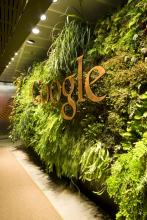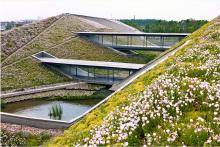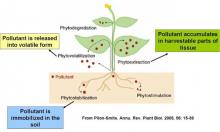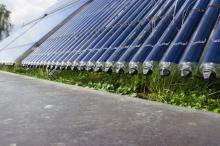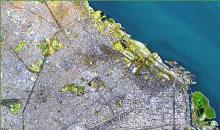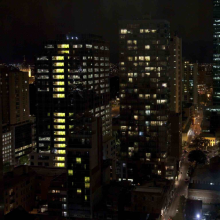News
In 2009 futurespace completed over 7000m2 of sustainable workplace for Google’s Australian HQ in Pyrmont, with a design review published in Indesign Magazine.
RECORDINGS OF SPEAKERS NOW AVAILABLE IN THE WEBSITE LIBRARY.
The temperature of some of our cities, such as Melbourne, can be up to four degrees warmer than surrounding areas, but adequate green infrastructure may help reduce those temperatures.
A team of University of Melbourne and Monash University researchers is trying to establish how green infrastructure can interact with urban design to reduce temperatures in cities.
This is a very knew area of scientific inquiry and we are just scratching the surface. However, enough successful work has been done that compels us to start incorporating these tactics and strategies in our built environment as partners in progress. Our green standards are abysmally too low for any serious self-congratulations. By using grey water as green roof and living wall irrigation now, we can start evaluating the phytoremediation effects as we go. After mechanical filtration and phytoremediation, along with control of the contaminants we introduce into our environment, I see no reason why we can’t start using green water for a wide array of uses from laundry to washing food to washing ourselves, to irrigating food crops, to irrigating green roofs and living walls in areas short on potable water.
Attend an International Green Roof Conference ONLINE minus the travel, fares and associated costs. To Register our members can use the Price Discount Code 'GRAUS'
STARTS SOON 12TH FEBRUARY - ACCESS FOR AN ENTIRE MONTH.
The environmental benefits of green roofs have now been well documented, and include storm water retention, improved water quality and provision of a recycled water supply, evaporative cooling from plants, biofiltration of airborne pollutants, and increased carbon dioxide/oxygen exchange through photosynthesis.
Current research in Adelaide involves monitoring thermal performance, water quality and useage, and plant performance characteristics of extensive and intensive green roof beds on the 22nd level rooftop of ANZ House in Adelaide. Green roofs can minimise rising temperatures and the UHI in Australian cities, which would have a dramatic impact on public health, given that heat waves are now recognised as the nation's major natural disaster, ahead of bushfires and floods.
Graeme Hopkins and Christine Goodwin report
Docklands Area Comes to Life with Green High Rise
To restore the balance in urban ecosystems, urban planners and designers have started to look for different ways to generate green spaces in an increasingly grey world. Green spaces benefit cities and their inhabitants by minimizing temperature variation, absorbing rainwater, reducing stormwater runoff and promoting biodiversity, all of which can improve the well-being of the cities inhabitants.
Mark Paul from The Greenwall Company wins The 2012 Melbourne Design Award for the tallest greenwall in Australia! Spanning 22 floors of the Origin Energy head office in Melbourne...


